Caring for Your Dog’s Coat: Brushing, Combing, and Mats — Oh My!
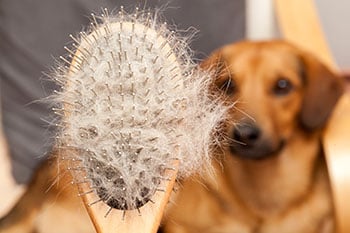
Dog fur always seems to get everywhere — on your clothes, on the furniture, in your coffee, even little fur tumbleweeds that float across the floor. Keeping your dog brushed will help you minimize the layer of fur over everything and promote healthy skin and a shiny coat. But what kind of dog brush should you keep handy? This all depends on your dog’s coat type. Read on for tips on how to pick the most effective brush for your dog.
Benefits of Brushing Your Dog’s Coat
- Regular brushing prevents matting. Mats can cause serious skin issues, painfully pull and pinch at your dog’s skin, and can hide some nasty critters such as fleas or maggots … gross! Once mats have formed in your dog’s coat, it can be painful for your dog and difficult to remove them yourself — and it’s best done by a professional groomer.
- Regular brushing keeps your dog cooler. Dogs with undercoats need to avoid any fur impacted against the skin to allow airflow and stay cool.
- Regular brushing builds the bond between you and your dog.
- Regular brushing helps you spot anything unusual, such as parasites, lumps, or sores.
- Regular brushing keeps your dog’s skin and coat healthy. Brushing helps to distribute your dog’s natural oils throughout their coat, keeping their fur nice and shiny.
Brushing helps cut down on your dog’s shedding. Better the fur on the brush than on your microsuede couch!
A Veterinary Guide to Tear Stains

Excessive tearing can occur as a result of irritation to your dog’s eyes or because your dog’s tears are not draining properly. Just as your eye waters if a speck of dust blows into it, dogs’ eyes will make tears when irritated to flush away anything harmful. When the eyes are continually irritated, this can lead to chronic tearing that produces stains. Conditions that might irritate the eye include eye infections, glaucoma, and eyelash or eyelid problems.
Wading through misinformation yet again, Dr. Magnusson summarizes veterinary thinking on tear stains.
12 Steps to Dazzling Dog Teeth
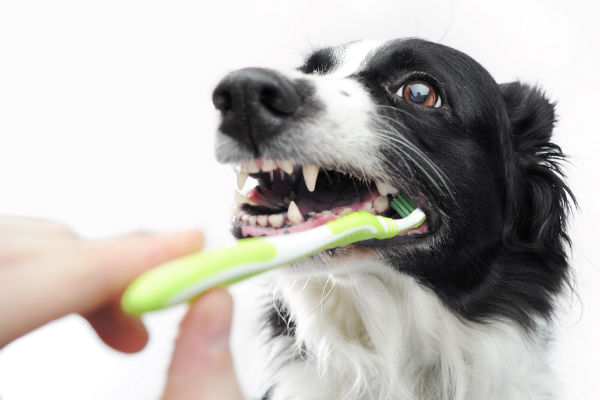
Many dogs are not comfortable having their nails trimmed. This group has a very narrow, but in-depth focus on Counter conditioning (CC) and Desensitization (DS) to help dogs learn to be comfortable.
Desensitization is the process of exposing your dog to a stimulus beginning at a very low intensity. Counter conditioning and desensitization need to be used together to be effective and are often used to change unwanted behavior in dogs (and cats!) especially fearful and aggressive behaviors.
Every dog has their own pace, and threshold, but with perseverance, all dogs can achieve a tolerance level to allow them to receive the grooming care they need.
How to Stop a Dog’s Nail From Bleeding
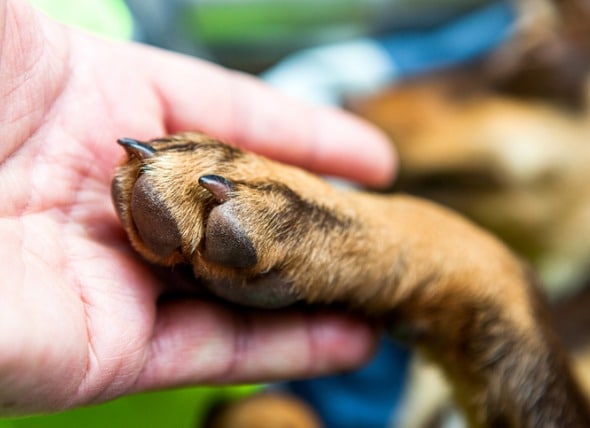
Cutting too far while trimming your dog’s nails is terrifying, but accidents do happen. Here are some tips for how to stop a dog’s nail from bleeding.
Styptic powder is a pet parent’s best friend in the event of a dog nail injury. The powder will help to stop the bleeding so you can examine the toe for additional injuries.
To use styptic powder, press a pea-sized amount of powder onto the nail tip to ensure that it sticks. If you trim your dog’s nails regularly, you should have this on hand during nail trim sessions. If you don’t have styptic powder, dab the tip of the nail on a bar of soap or in a little flour or cornstarch. If the bleeding continues for more than several minutes, call your veterinarian.
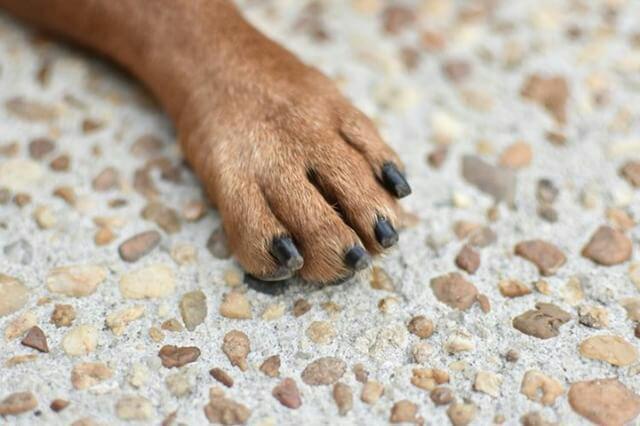
Many dogs are not comfortable having their nails trimmed. This group has a very narrow, but in-depth focus on Counter conditioning (CC) and Desensitization (DS) to help dogs learn to be comfortable.
Desensitization is the process of exposing your dog to a stimulus beginning at a very low intensity. Counter conditioning and desensitization need to be used together to be effective and are often used to change unwanted behavior in dogs (and cats!) especially fearful and aggressive behaviors.
Every dog has their own pace, and threshold, but with perseverance, all dogs can achieve a tolerance level to allow them to receive the grooming care they need.
Anal Glands — Why Dogs Have Them & What To Do When They’re A Problem
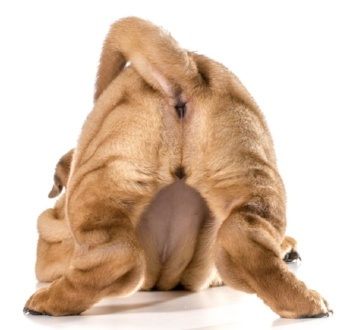
The most common way that anal glands become a problem are when they get impacted (the secretions stored within them aren’t able to be expressed) and when they become infected. Impaction is uncomfortable and increases the chances of infection. Impacted and infected anal glands will become abscessed if not treated. Once the pressure within the abscessed anal gland builds to a high enough level, the abscess is likely to rupture through the dog’s skin, since the impacted material can’t be normally expressed through the anal gland duct. Abscesses may require surgical repair and drain placement, and these infections typically require antibiotics and pain medications, too.
Conditions and factors that can increase chances and frequency of a dog’s anal glands becoming impacted and/or infected include:
- Chronic (deep) skin infections with bacteria and/or yeast
- Skin mite infestations (e.g., Demodex, Sarcoptes)
- Food hypersensitivities (“food allergies”)
- Atopic dermatitis (“environmental allergies”)
- Being overweight or obese
- Hypothyroidism (low thyroid hormone levels or function)
Dog’s with anal gland problems will often give you plenty of signs… some more obvious than others. And while the signs listed below will often indicate an anal gland problem, they won’t always. So if you’re seeing these signs repeatedly, or if you’re seeing these signs and know that your dog has a history of anal gland problems, it’s time for a visit to your vet. They can help make your dog more comfortable, and help you get to the “bottom” of your dog’s problems, whatever they may be.
“Scooting” or dragging their butt along the ground is only one of the many possible signs indicating a potential anal gland problem. Others may be:
- Excessive licking of their rectum
- Straining, vocalizing, or otherwise having difficulty or pain when defecating (pooping)
- A swelling or “bump” under the skin next to their rectum
- Blood and/or pus on their stools
- Blood and/or pus on the carpet, their bed, or on your lap after they’ve been laying there
Work with your veterinarian (and possibly a board-certified veterinary dermatologist) to figure out and manage the underlying cause of the frequent anal gland problems.
